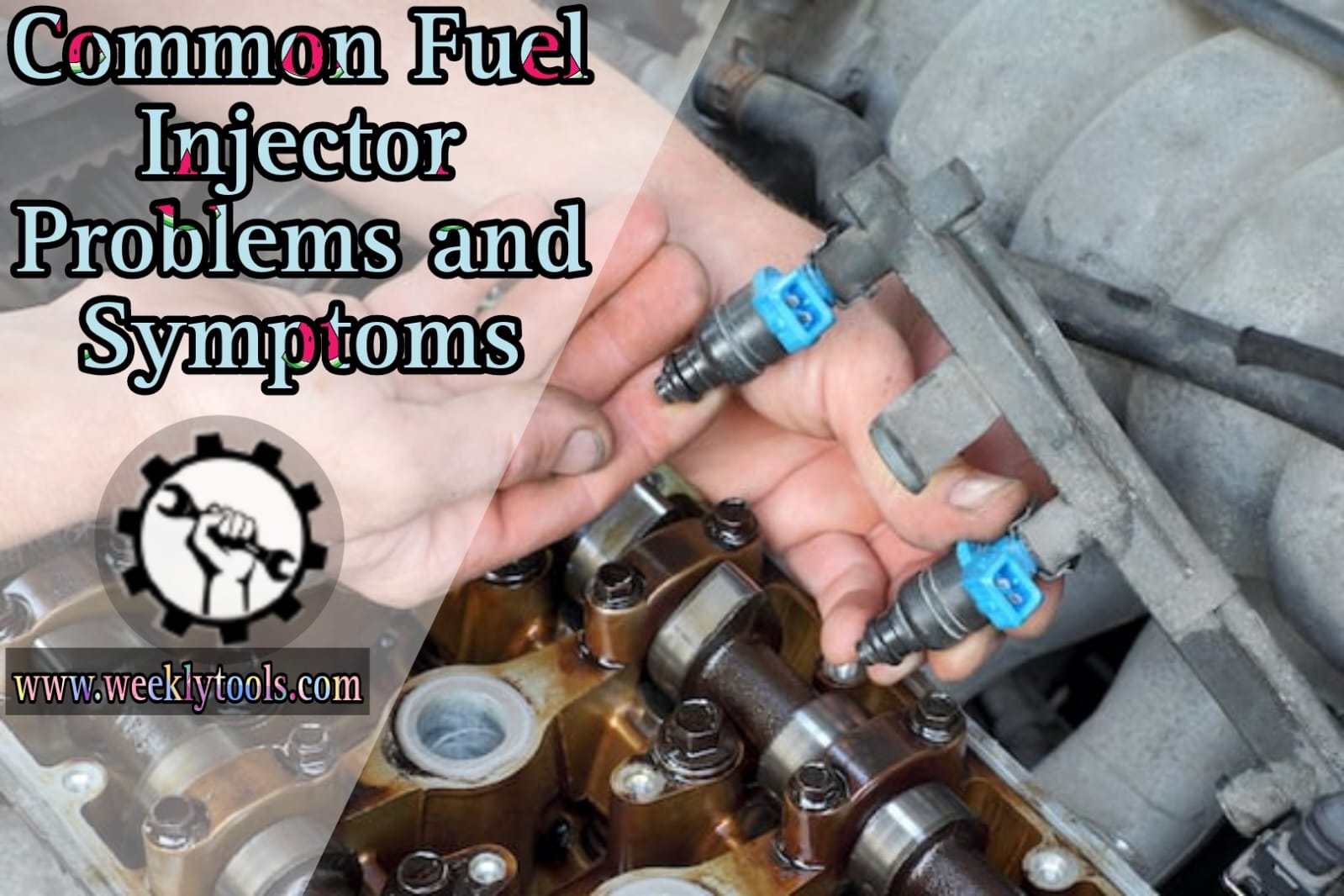What Does a Fuel Injector Do?
Your engine’s performance depends on a fuel injector’s accurate fuel delivery. An electronically controlled valve sprays fuel in a thin mist for optimal combustion. Fuel injectors and the air intake system optimize engine efficiency and power by controlling the fuel-air(oxygen) mixture in the chamber.
Fuel injectors regulate fuel delivery to increase acceleration, fuel efficiency, and pollution. Understanding how to check fuel injectors with an obd2 scanner helps diagnose and fix problems, assuring engine performance and vehicle functionality.
If you want to watch the video please see on YOUTUBE.
Injector Problems? How Do I Know I Have Them?
Different Fuel Injection problems can cause various performance issues in your vehicle. It’s important to recognize the signs that may indicate injector problems. Here are some common symptoms to watch out for:
Common Fuel Injector Problems and Symptoms

Dirty Fuel Injectors: Over time, deposits build up on the fuel injectors, making them dirty and possibly affecting how well the engine runs. These deposits block the flow of fuel, which makes the engine idle rough, slows down progress, and uses more gas. During acceleration, you might notice a lack of power or a pause.
Clogged Fuel Injectors: In the worst cases, fuel injectors can get so clogged that the fuel flow is greatly reduced or even stopped completely. This can cause the engine to fail, stall, lose power, and use a lot of gas. There may be signs like a rough idle, stopping, or trouble starting the engine.
Fuel Injector Not Closing: When a fuel injector doesn’t close properly, fuel can leak into the combustion chamber when it shouldn’t, making a rich fuel mixture. This can make the exhaust smoke black, clog the spark plugs, and slow down the engine. You may also notice a strong fuel smell coming from the exhaust or less fuel economy.
Fuel Injector Not Opening: On the other hand, if a fuel injector doesn’t open all the way, it doesn’t give the engine the right amount of fuel. This makes the fuel blend too lean, which causes the engine to misfire, lose power, and put out more pollution. You might feel the engine hesitate, lose power, or find it hard to keep the same speed.
It is important to fix or address these fuel injector problems right away if you want your car to run well and use the least amount of gas. Regular care, like cleaning the fuel system, can help stop deposits from building up and keep the fuel injectors in good shape.
Experiencing Any of the Above? Run Diagnostic Tests!
As for confirming and diagnosing the actual problems of the fuel injector, you need to know How to diagnose fuel injection for sure. At this point, various diagnostic tests can be conducted using an OBD2 scanner.
These tests offer valuable insights for troubleshooting and pinpointing specific issues. Below are the diagnostic tests you can perform:
Measure Temperatures from Your Exhaust Manifold:

Utilize an OBD2 scanner (Autel Scanner maxicom MK808S)with temperature measurement capabilities to assess the temperatures of the exhaust manifold. Noteworthy temperature variations between cylinders might indicate a faulty fuel injector.
Listen to Your Fuel Injectors:
While the engine is running, employ a mechanic’s stethoscope or a long screwdriver to listen to each fuel injector. A properly functioning injector will emit a consistent clicking sound. If you observe irregular sounds or silence from an injector, it may indicate a problem.
Visually Inspect the Fuel Injectors:
Carefully examine the fuel injectors for signs of leakage, clogging, or damage. Check for fuel stains, loose connections, or cracked injector bodies. Promptly address any visible issues that arise.
Perform a Scan for Trouble Codes:
Connect the OBD2 scanner to the vehicle’s diagnostic port and initiate a scan for trouble codes. Look for relevant codes associated with fuel injectors or fuel system malfunctions. The scanner will provide specific codes that aid in accurate diagnosis.
Check for Injector Misfires (if applicable):
The OBD2 scanner permits access to real-time data from various engine sensors. Monitor fuel injector pulse width, fuel trims, and oxygen sensor readings for any irregularities that might indicate injector problems.
Injector Misfire Check (if applicable):

Certain OBD2 scanners (Launch X431 V+)offer cylinder balance tests or injector contribution tests. These tests can identify misfires or imbalances caused by faulty fuel injectors.
Record and Analyze the Gathered Information:
Thoroughly document the diagnostic results, noting any abnormal readings or patterns that suggest a faulty fuel injector. Analyze the data and compare it with the symptoms observed earlier. This information will aid in determining the appropriate course of action.
Note any Abnormal Readings or Patterns that may Indicate a Faulty Injector
Following the diagnostic tests, it is crucial to evaluate the gathered information and identify any abnormal readings or patterns that indicate a faulty fuel injector. This step enables an accurate diagnosis and helps determine the most suitable solution to address the issue.
Further Steps
Once you have gathered the necessary information, it’s time to determine the most appropriate course of action to resolve the fuel injector problem. Depending on the severity of the issue, there are a few potential steps you can consider.
Cleaning the Injectors:
If the problem seems minor and primarily caused by injector clogging or build-up, using a fuel system cleaner can be an effective solution. These cleaners are designed to remove deposits and improve injector performance. Follow the instructions provided by the cleaner manufacturer for the best results.
Replacement of Injectors:

In cases where the injectors are severely clogged or damaged, cleaning alone may not be sufficient. It may be necessary to replace the faulty injectors with new ones. This ensures proper fuel delivery and optimal engine performance.
If you’re unsure about the replacement process or lack the necessary skills, it’s recommended to seek professional assistance from a qualified mechanic or automotive technician.
Conclusions
Utilizing an OBD2 scanner to check fuel injectors is an invaluable method for diagnosing potential issues and maintaining optimal engine performance. By carefully observing symptoms, conducting diagnostic tests, and analyzing the results, you can identify and address fuel injector problems in a timely manner.
Additionally, practicing regular maintenance and cleaning routines can help prevent future injector issues, ensuring that your vehicle operates smoothly and efficiently. Remember, when in doubt or faced with complex issues, seeking professional help is always a wise decision.

As a mechanical engineer, it’s easy for David to explain the functionality of the tool. David test most of the tools before writing a review. its help him to learn something new and suggest the best product for you.





